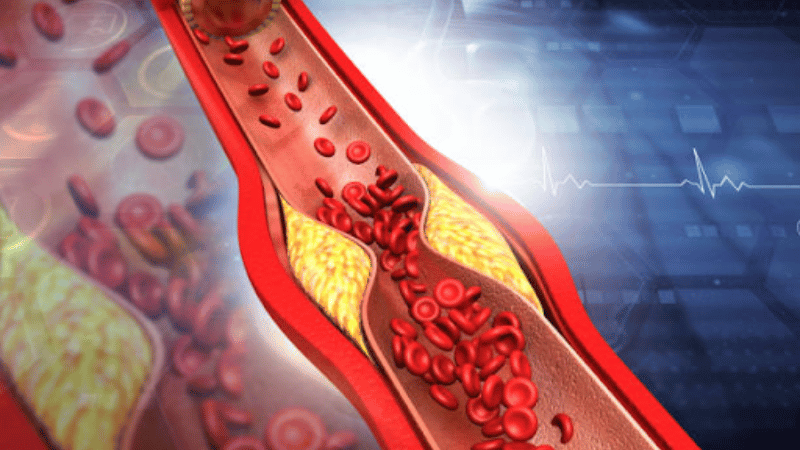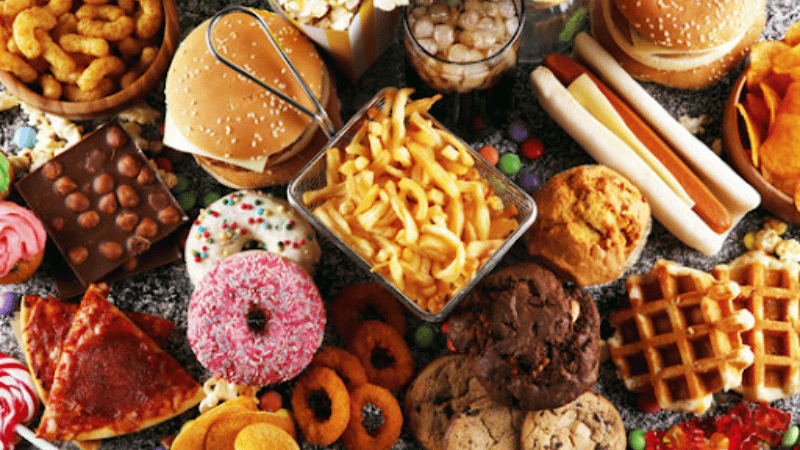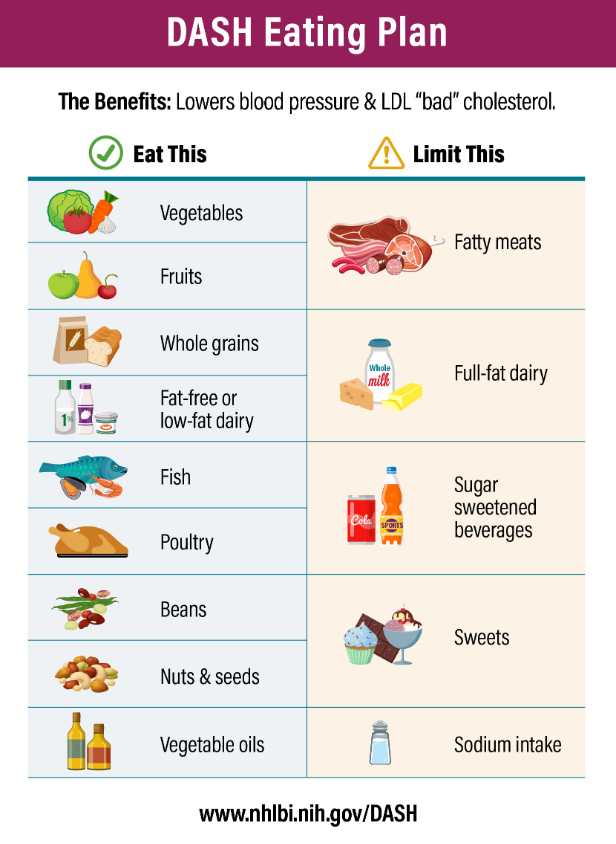In the United States, over 8.5 million people over the age of 40 have peripheral artery disease (PAD), a vascular disease caused by plaque buildup within the arteries of the lower legs.¹ This plaque buildup is often the result of a lack of exercise, high cholesterol, high blood pressure, or an inadequate diet. Fortunately, limiting foods that contribute to blocking arteries can help improve your quality of life and slow the progression of PAD symptoms.
In this article, we’ll discuss different foods to avoid for heart health so you can build a well-rounded diet that complements your PAD treatment plan.
What is Peripheral Artery Disease (PAD)?
Peripheral artery disease (PAD) is a serious vascular disease caused by plaque buildup in the arteries. Plaque is a combination of fatty deposits, cholesterol, and other substances that build up on the inner walls of arteries. This buildup can make it more challenging for blood, nutrients, and oxygen to get to your lower extremities.
People with PAD often experience pain and swelling in the legs. Other common symptoms include tingling, numbness, leg hair loss, and shiny skin. If you’re experiencing any of these PAD symptoms, consider scheduling an appointment with an interventional radiologist at USA Vascular Centers for a diagnosis.
If you’re diagnosed with PAD, our vascular doctors will provide you with a personalized treatment plan along with specific lifestyle modifications based on the severity of your symptoms. One lifestyle change they may recommend is prioritizing a well-balanced diet and lowering cholesterol levels.
Cholesterol and PAD
Cholesterol is a fatty substance that can build up in the arteries, forming plaque. This buildup narrows your arteries and can lead to health risks. Certain foods are known to increase LDL cholesterol, causing plaque buildup and reducing blood flow. When this occurs in the legs, arms, or head arteries, it’s called peripheral arterial disease (PAD).
High (bad) LDL cholesterol significantly contributes to plaque formation and can be challenging to remove from the body. Even after adjusting diet and exercise routine, it’s expected to take around three months for a person to lower their cholesterol levels.²
High-density lipoprotein (HDL) cholesterol is considered “good” cholesterol. HDL cholesterol because it helps remove harmful LDL cholesterol from the bloodstream, preventing buildup in the arteries.
Examples of foods that can help increase HDL in the body include:
- nuts
- fatty fish
- avocados
Foods to Avoid With PAD
People with high cholesterol levels are at a high risk of developing PAD. If you have high cholesterol, you should limit the consumption of foods that can increase LDL cholesterol levels. Here are some of the foods to consider limiting:
Processed and Red Meats
Processed types of meat and red meats are high in saturated fats, which can increase LDL cholesterol.4 They also have higher sodium content, which can increase blood pressure.
Examples of Processed and Red Meat Foods :
- Bacon
- Cured meat (salami, ham, pastrami, etc.)
- Pork
- Veal
- Lamb
- Beef
High-Sodium Foods
Consuming too much sodium can increase your risk of heart disease and put you at risk of developing PAD symptoms. The excess sodium in your system can also elevate your blood pressure and contribute to plaque buildup in the arteries. If you have PAD, you should restrict sodium intake to no more than 1.5 to 2 grams per day.³ For reference, 1.5 grams of sodium equals about 3/4 of a teaspoon of salt, and 2 grams is approximately one teaspoon.
Examples of High-Sodium Foods :
- Canned/frozen meals
- Cheese
- Deep-fried food
- Salted snacks (potato chips, nuts, pretzels, etc.)
- Pickled Vegetables
- Condiments/Sauces
Refined Grains
Refined grains are processed foods that have the bran and germ removed. Bran and germ contain essential fibers that contribute to a well-rounded diet. When this is removed, refined grains, like white bread and white rice, don’t have the same nutritional value. These grain types can also increase LDL cholesterol, lower HDL cholesterol, and increase inflammation.
Examples of Refined Grain Foods :
- White bread
- Crackers
- Baked goods (cakes/pastries)
- White rice
- Pasta/pizza dough
- Cereal
Tips for Building a Heart-Healthy Peripheral Artery Disease Diet
If you have PAD, your vascular doctor may recommend adjusting your diet and limiting foods high in unhealthy fats and cholesterol. Changing what you eat can improve blood flow in your legs. This can help with the pain you might feel when walking, keep you moving more easily, and may help slow the progression of PAD symptoms.
Here are some tips for building a healthy peripheral artery disease diet:
Make Meaningful Adjustments to Your Diet
- Use avocado, olive, or sunflower oil instead of coconut oil.
- Add fruits like lemons, limes, and blueberries to your water instead of soda.
- When baking, use honey or agave instead of sugar.
- Swap out pre-packaged lunch meat for sliced turkey or chicken at home.
- Add legumes, nuts, and berries to your diet.
- Try whole grains instead of processed white bread.
Prioritize Hydration
Drinking water can help boost circulation and improve bodily functions. Staying hydrated and avoiding sugary drinks can also significantly lower cholesterol and blood pressure.
Consider the DASH Diet
The DASH (Dietary Approaches to Stop Hypertension) limits sodium, overall fat intake, and alcohol consumption.5 Evidence suggests that this dietary modification may reduce hypertension, cardiovascular disease risk, and cardiovascular disease progression.
When a Healthy Diet May Not Be Enough
For many patients, it may not be enough to eliminate the worst foods for PAD. This is because plaque buildup within the lower extremities can also be caused by other factors, such as:
- Family history of vascular disease
- Being over the age of 50
- Used to or currently smoke tobacco products
- Being of African-American descent
If an individual follows a strict regime of limiting foods that clog arteries, it may not completely reduce plaque buildup in the arteries. Depending on the severity of the PAD diagnosis, a vascular doctor may recommend a non-surgical treatment to improve blood flow and help alleviate symptoms. Treatment options include:
- Angioplasty: A catheter inserts a balloon into the affected artery. The balloon expands and compresses the plaque against the artery wall to restore blood flow.
- Stent placement: After an angioplasty, a vascular doctor places a permanent stent into the blocked artery to prevent future blockages.
- Atherectomy: A blade or laser is used to remove plaque from the artery walls.
Finding a Successful Solution With USA Vascular Centers
The vascular doctors at USA Vascular Centers offer non-surgical treatments for patients with peripheral artery disease. Our team of interventional radiologists will discuss the treatment options and provide expert recommendations based on any medical history and the severity of the symptoms.
With a personalized treatment plan and lifestyle modifications, you can improve your quality of life, reduce your risk of developing PAD, and prevent its progression.
Call us at 888-773-2193 or click here to schedule online today.
Sources Cited
- Facts about Peripheral Arterial Disease (P.A.D.), National Library of Medicine. (n.d.). Peripheral arterial disease. PAD | MedlinePlus. National Institutes of Health, & National Heart, Lung, and Blood Institute. (n.d.)
- How long does it take to lower cholesterol? Goldman, R..Healthline.
- How sugary drinks can affect cholesterol levels and heart health.Citroner, G, Healthline.
- Saturated Fat. (2021, November 1). American Heart Association.
- DASH Eating Plan |. NHLBI, NIH.






